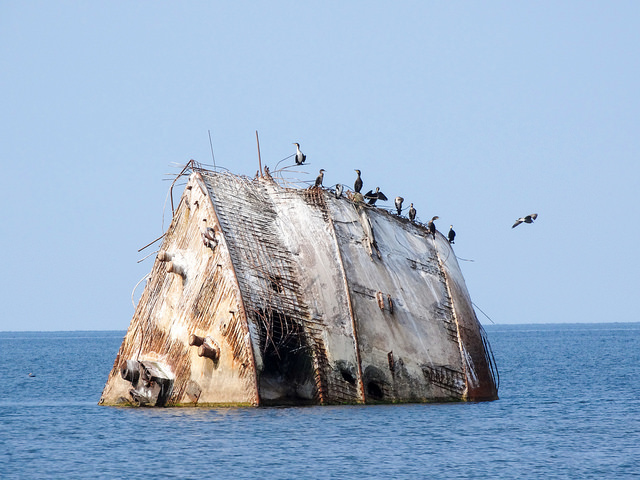Dead in the Water
By Dick Eiden
“German liners struggled heroically to emulate Wagnerian castles, English liners fell into the dark wood and leather habits of a London club.”
– Melvin Maddocks, The Great Liners, (Alexandria, VA, 1978)
The bow went down first, while the stern stood tall, slowly
disappearing two and a half hours after the kissing stopped.
The iceberg ripped a hole, filling five “watertight” compartments.
I’m not conversant with hydraulics, but I’ve seen ships
sink on TV news and countless films. They come to a stop
dead in the water, and with a sense of basic physics I see
how they list — left or right, then sink slowly at first, so slow
It’s hard to see what’s happening.
The size of the ship makes a difference, the nature
and shape of the rupture, where it is in relation to the keel,
bulkheads, engine room. Boats with one compartment can fill
and go down fast. Ocean liners take time as waters bubble up
in cabins, hallways, up stairs to the dance floor on deck four.
It’s too complex to fully understand, but we sense the rupture,
feel the list like an airplane banking into a slow turn. Playing cards
slide on the tray, objects start to roll, but we shuffle and deal,
pour another drink and hope for the best — nothing we can do.
Listen to the ship’s band?
Rearrange the deck chairs?
Make a list of doomed ships?
Dick Eiden is a retired lawyer and lifelong peace and civil rights activist (since 1965). He ran for the U.S. Congress as an independent in 2012. Paying the Rent, a memoir of his adventures as a traveling movement lawyer, will be published in 2018.
“Activism is the rent I pay for living on the planet.” – Alice Walker
Photo credit: Jevgenijs Slihto via a Creative Commons license.


